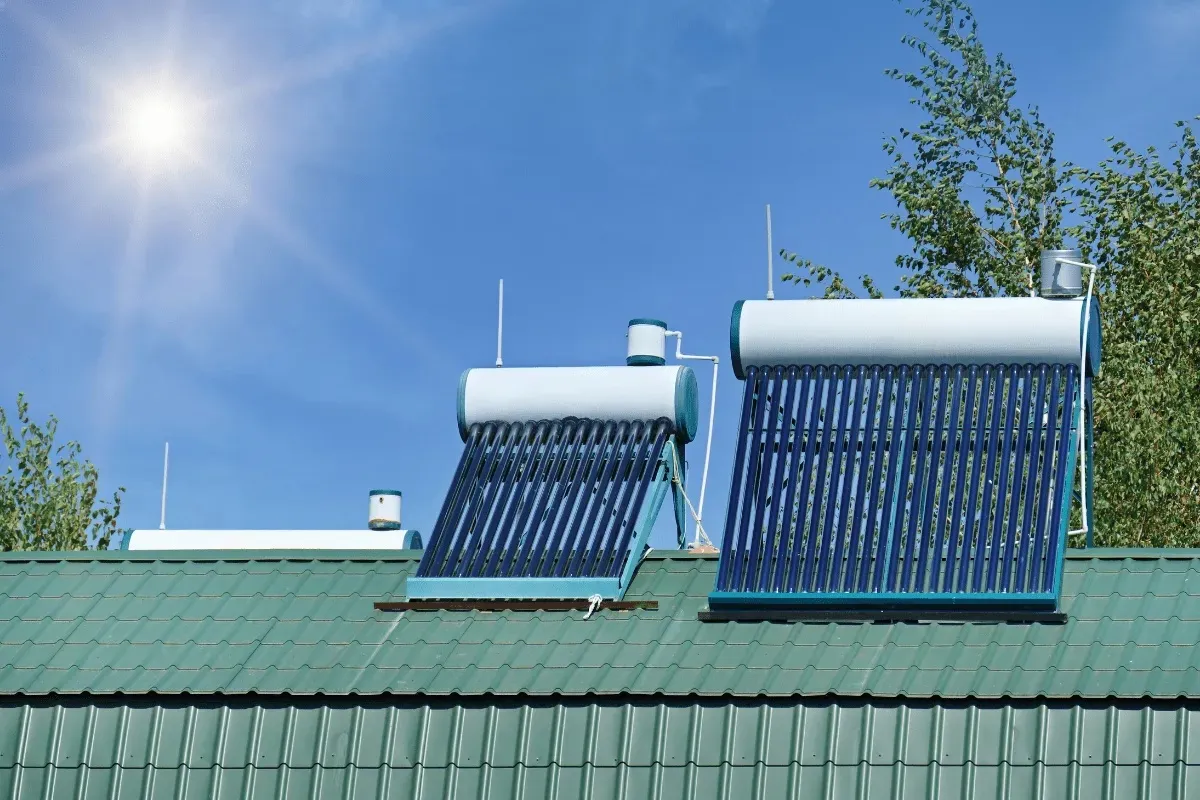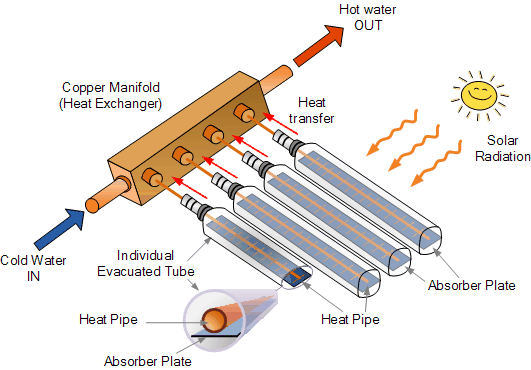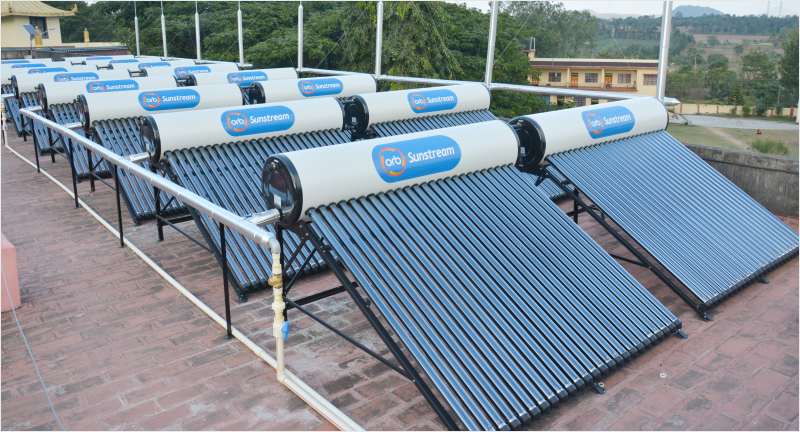
Solar Thermal
A solar water heating system is a device that helps in heating water by using the energy from the SUN. Solar energy is used for heating water. Water is easily heated to a temperature of 60-85℃. Solar water heaters (SWH) of 100-500 ltr. capacity is suited for domestic use. Larger systems can be used in restaurants, canteens, guest houses, hotels, hospitals, hostels, etc. A 100 ltr. capacity SWH can replace an electric geyser for residential use and may save approximately 1500 units of electricity annually and can prevent the emission of 1.5 tons of carbon dioxide per year.
Evacuated Tube Collector (ETC) Technology

Working Of Evacuated Tube Collector (ETC) Based Solar Water Heater
An ETC collector is made of double-layer borosilicate glass tubes which are evacuated for providing insulation. The outer wall of the inner tube is coated with a triple layer of selective absorbing material. This helps the absorption of solar radiation and transfers the heat to the water which flows through the inner tube. In ETC solar water heater all the tubes are directly injected into the tank. Hot water flows to the tank and cold water replaces the hot water. Heated water is collected in a tank that is insulated to prevent heat loss. Circulation of water from the tank through the collectors and back to the tank continues automatically due to the thermosiphon system. The stored hot water can be used later at any time.
What are the site requirements for the installation of a solar water heating system?
The basic requirement for the functioning and installation of a solar system is the availability of shadow-free area and availability of sunlight throughout the day. Domestic solar water heating systems are installed on the rooftop of the house. There should be no obstruction to sunlight in the south, west, and east directions in that order of preference (an arc of about 120 °, 60° both sides of the southern direction should ideally be shadow-free). Coldwater should be available at a height of around 6ft. from the base of the system.
ESTIMATES OF REQUIREMENTS OF HOT WATER – SOME USEFUL THUMB RULES
| Application | Typical Requirement of Hot Water at 60℃. |
|---|---|
| Household bathing using buckets | 10-20 liters per person per bath. |
| Household bathing using the shower with a mixing tap | 20-30 ltr. for 10-15 minute bath |
| Shaving, while a tap runs | 7-10 liters |
| Household bathing in the bathtub (one filling) | 50-75 liters |
| Washbasin with a mixing tap (hand wash, brushing of teeth, etc.) | 3-5 liters per person per day. |
| Kitchen washing | 2-3 liters per person per day. |
| Dishwasher | 40-50 liters per wash cycle |
| Clothes washing machine | 40-50 liters per cycle |
What would happen on cloudy days?
The heating of water by the solar system will obviously be affected. If it is so cloudy that energy received from the sun is almost zero, the output of solar collectors also will be nil. On partially cloudy days some output can be expected but, the system is designed and capable to provide hot water all time even if there is no sunshine or cloudy weather. There is an inbuilt electrical backup in the solar water heater to take care of hot water demand.
How much electricity and money can be saved?
The table below illustrates the approximate savings of electricity and money for 100 ltrs. per day solar water heating systems located in different parts of the country.
| Northern Region | Eastern Region | Southern Region* | Western Region* | |
|---|---|---|---|---|
| Expected no. of days of use per year | 200 days | 200 days | 250 days | 250 days |
| Expected yearly electricity saving with use of full capacity, kwh | 950 | 850 | 1200 | 1300 |
| Monetary savings at different prices of electricity, Rs/year | ||||
| Rs. 4/kwh | 3800 | 3400 | 4800 | 5200 |
| Rs. 5/kwh | 4750 | 4250 | 6000 | 6500 |
| Rs. 6/kwh | 5700 | 5100 | 7200 | 7800 |


